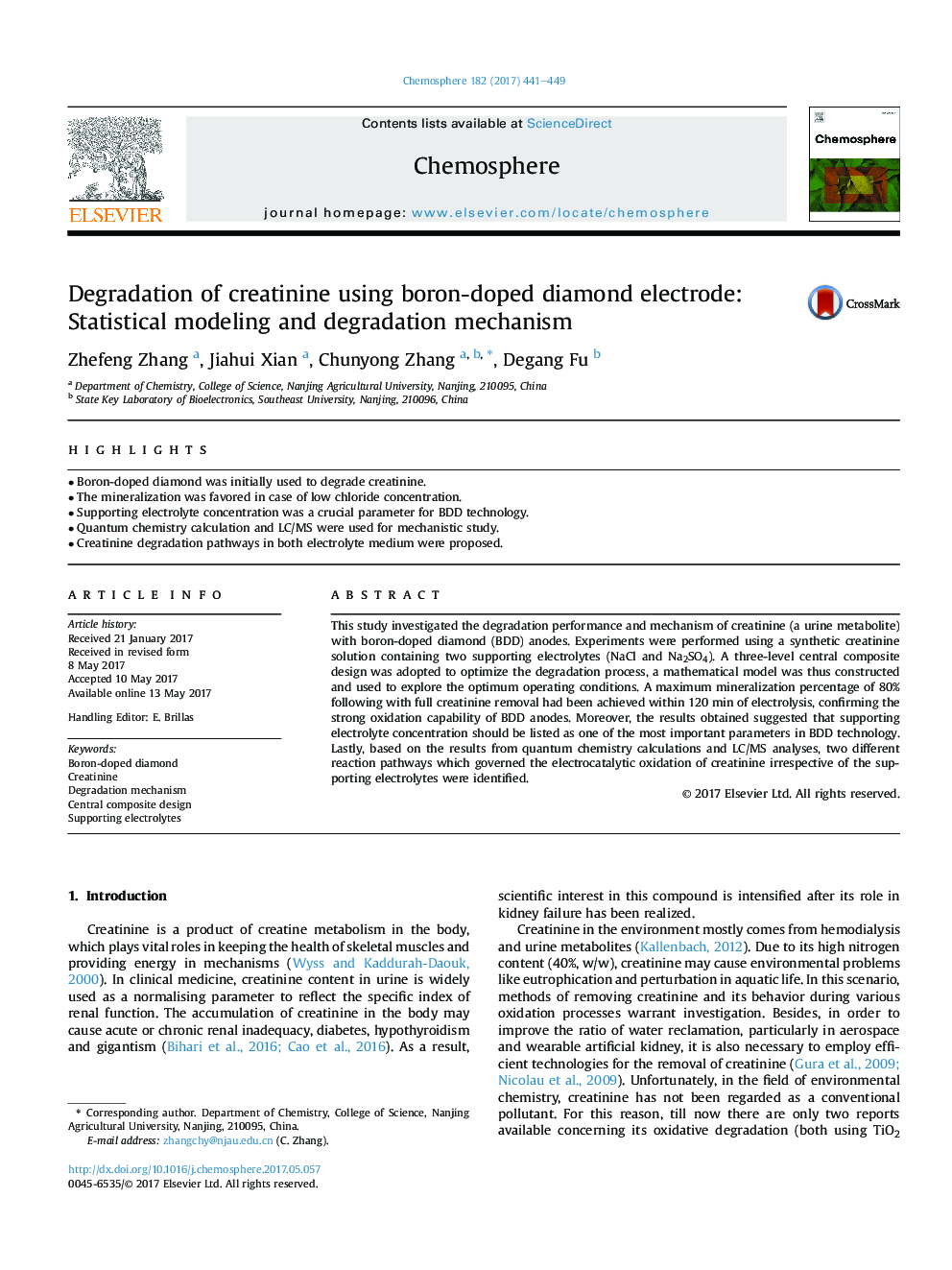| Article ID | Journal | Published Year | Pages | File Type |
|---|---|---|---|---|
| 5746954 | Chemosphere | 2017 | 9 Pages |
Abstract
This study investigated the degradation performance and mechanism of creatinine (a urine metabolite) with boron-doped diamond (BDD) anodes. Experiments were performed using a synthetic creatinine solution containing two supporting electrolytes (NaCl and Na2SO4). A three-level central composite design was adopted to optimize the degradation process, a mathematical model was thus constructed and used to explore the optimum operating conditions. A maximum mineralization percentage of 80% following with full creatinine removal had been achieved within 120Â min of electrolysis, confirming the strong oxidation capability of BDD anodes. Moreover, the results obtained suggested that supporting electrolyte concentration should be listed as one of the most important parameters in BDD technology. Lastly, based on the results from quantum chemistry calculations and LC/MS analyses, two different reaction pathways which governed the electrocatalytic oxidation of creatinine irrespective of the supporting electrolytes were identified.
Keywords
Related Topics
Life Sciences
Environmental Science
Environmental Chemistry
Authors
Zhefeng Zhang, Jiahui Xian, Chunyong Zhang, Degang Fu,
